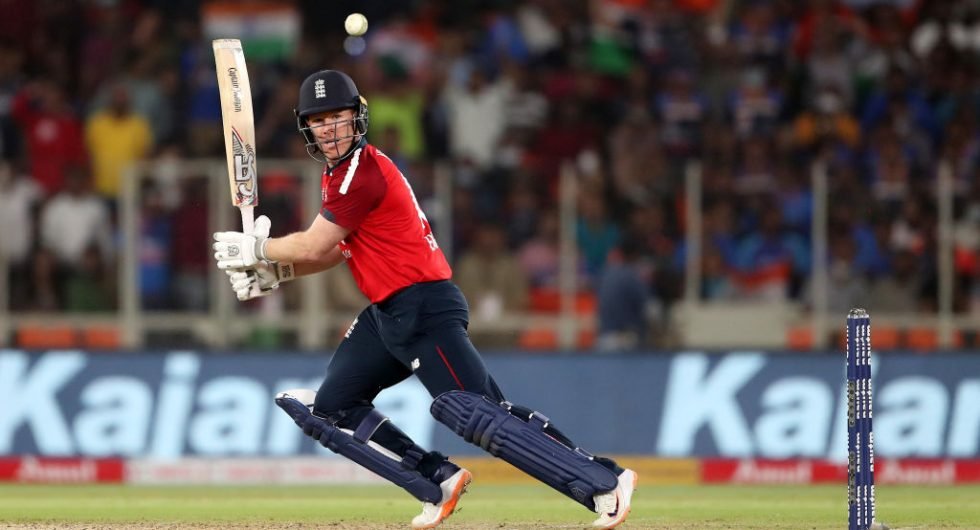We need a new way of measuring what a ‘good’ T20 innings is

 by Yas Rana
by Yas Rana
@Yas_Wisden 2 minute read
Yas Rana argues that ‘rate ratio’ could be a metric to help make it easier to evaluate a T20 innings in a transparent way.
By June this year, professional T20 cricket will be old enough to buy a drink.
In the 18 years since the format’s birth, T20 cricket has prompted a rapid evolution in the skillset possessed by the average professional cricketer as well as making a profound difference to the game’s economics.
Bowlers have a more varied set of deliveries at their disposal than ever before, batters can routinely access areas on the field previously deemed high-risk and fielders now make the extraordinary look mundane.
But despite the format’s continued evolution, the headline metrics and language used to described individual performances has by and large remained the same.
Take the final T20I between India and England as an example. On commentary, Michael Atherton described Dawid Malan’s 46-ball 68 as a “very good innings”. On social media, the innings was portrayed in some quarters as an emphatic rebuttal of previous criticisms focused on his slow starts.
An innings of 68 in a high-pressure run chase against a side as good as India is commendable, but the descriptions of it were influenced, and restricted, by the metrics that are readily available to us.
On TV, we can most obviously see how many runs a batsman has scored. The entire history of cricket – pre-T20 – conditions us to automatically regard any 50-plus innings as a “very good” one.
We’re also given a batsman’s strike-rate. Strike-rates have long been used to measure how quickly a batter scores their runs in limited overs cricket. Even for an experienced cricket fan, translating an innings’ strike-rate into an understanding of the efficacy of said innings is not straightforward. We know a strike-rate of above 140 is generally pretty good, but it’s hard to quickly quantify how useful a strike-rate it is in relation to a match situation.
CricViz’s Match Impact metric is an excellent attempt at quantifying just how useful individual performances are in the context of a specific match. In that fifth T20I, Malan was given a rating of +5, one of only two English batsmen to receive a positive rating despite England finishing on 188 from their 20 overs. Jos Buttler, who scored a 34-ball 52, was given a neutral batting impact rating. For comparison, Rohit Sharma’s 34-ball 64 garnered a rating of +16 while Hardik Pandya’s 17-ball 37* was given a rating of +7. Virat Kohli’s unbeaten 80 off 52 balls was given a rating of -2.
As seen by some of the reaction to Expected Goals’ increased usage in mainstream footballing punditry, there is, unfortunately, a certain hesitancy and scepticism among a significant proportion of spectators around statistical modelling in sports analysis, however simply it’s laid out.
In a sport where numbers are so fundamental to how it’s understood, there are surely other straightforward ways to quantify the impact of a performance that can be easily consumed by the masses.
In run chases, something like a side-by-side analysis of the percentage of balls used up by a batsman and the percentage of the target’s runs scored, could simply illustrate how useful an innings has been. For example, in England’s fifth T20I defeat, Buttler scored 23.1 per cent of the runs England required to win and used up 28.3 per cent of England’s deliveries. A simple ‘23.1/28.3’ next to Buttler’s score on the scorecard would give an easily digestible piece of context for the spectator. If you divide the first number by the second, you would get a figure of 0.82. The higher the number, the more effective the innings.
This ‘Rate Ratio’ would help fans and pundits alike to better and more accurately describe an innings’ impact in simple terms. Performances like Ben Stokes’ 23-ball 46 in the fourth T20 would come out well with this metric, and give the audience a better understanding of it. In that knock, Stokes used up 19.16 per cent of England’s deliveries to score 24.7 per cent of their required runs; Stokes’ innings would get a Rate Ratio of 1.29, far higher than Buttler’s 52 in the following game.
It’s not by any means a perfect metric. For example, finishers are likely to generate higher Rate Ratios than anchors but over time, the metric would allow you to easily compare players in the same role as each other over long periods.
Something like the Rate Ratio wouldn’t be much more complicated to understand for viewers than strike rates and economy rates, and it would enhance the understanding of a format that still relies on antiquated metrics best suited for the game’s older, more established formats. It’s not a perfect metric, but it’s more informative than what’s currently on offer.
Subscribe to the Wisden Cricket YouTube channel for post-match awards, player interviews, analysis and much more.

